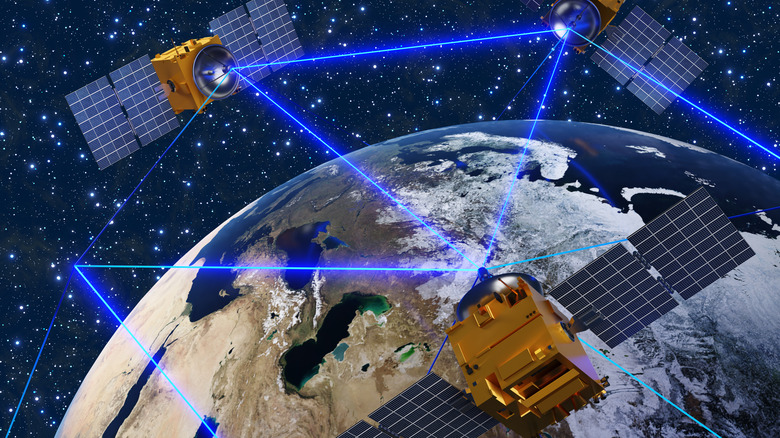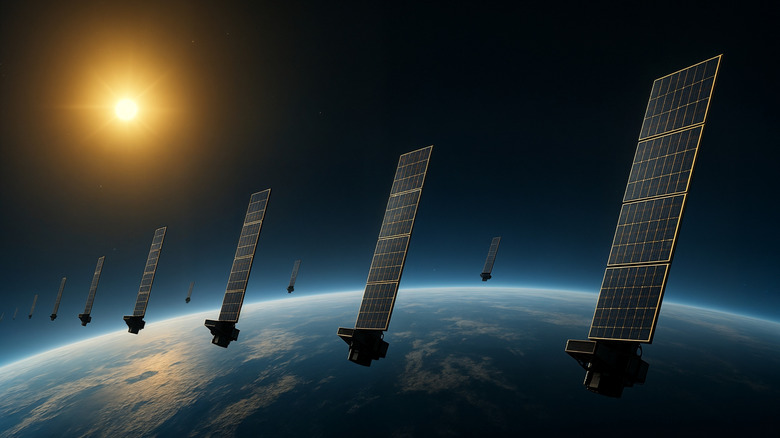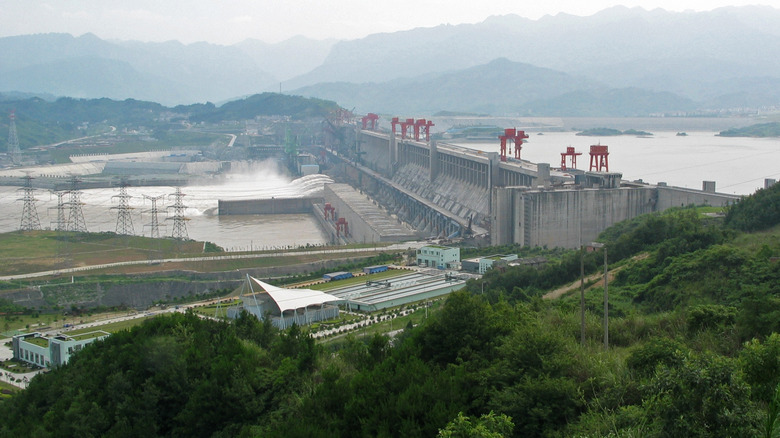China And NASA Avoided A Satellite Collision In Ground Breaking Cooperation
The U.S. and China usually operate on two different wavelengths, but a recent occurrence in the world of space traffic control involved both countries working in unison, which turned more than a few heads. The event in question went down in October 2025, when the Chinese National Space Agency (CNSA) took it upon themselves to reach out to NASA, as the former feared a satellite collision between U.S. and Chinese satellites was likely to occur. An event like this, when two spacecraft in low Earth orbit drift close to each other, is known as a conjunction.
NASA has typically been the one to sound the alarm whenever American satellites approached Chinese hardware, but that dynamic shifted recently. According to Alvin Drew (via Space), NASA's director of Space Sustainability, something unprecedented happened. "[W]e had a bit of a celebration," he said. "For the first time, the Chinese National Space Agency reached out to us and said, 'We're seeing a conjunction between our satellites. We recommend you stay put. We'll handle the maneuver.'"
This kind of cooperation has never happened before, and the timing couldn't be more significant. Both nations are launching satellites into orbit by the hundreds these days, rapidly crowding low Earth orbit. When the sky is getting busier by the day, learning to share the lane matters.
The high cost of a crowded sky
Launching satellites into low Earth orbit is a high-stakes, high-cost game. SpaceX has already sunk billions into building and maintaining Starlink. China is matching that momentum, with its state-run China Satellite Network Group aiming to put 26,000 satellites in orbit by 2029. With that kind of money riding on hardware circling the planet, nobody wants to risk a collision.
This kind of communication may end up being about more than just steering satellites around each other. According to the European Space Agency (via Science Direct), nearly 40,000 sizable debris fragments are already circling low Earth orbit — and one of them has already destroyed a Chinese military satellite. Unfortunately, there's currently no multinational plan for large-scale debris removal. Right now, agencies like NASA and CNSA are stuck being reactive.
They track the junk, predict potential collisions, and maneuver their spacecraft out of the way when danger gets too close. It's a constant, careful dance, and as more satellites go up, the margin for error keeps shrinking. The CNSA's willingness to coordinate with NASA is a promising step toward reducing the risk of future debris. If both sides can work together to avoid collisions before they happen, they can slow the buildup of space junk instead of just navigating around it.
A small step toward shared space
The CNSA's decision to reach out to NASA before the latter had to buzz the former may not be the most exciting celestial news, but it's the kind of quiet coordination that actually matters. If this becomes standard practice, we could be looking at the early groundwork for shared research, shared infrastructure, and, eventually, shared strategy in orbit.
At this point, it's already looking like China might put astronauts back on the Moon before NASA. There's also China's long-term plan to turn its new space station into a kind of orbital power plant, using large-scale solar tech. The concept takes cues from the same engineering mindset behind the Three Gorges Dam — just moved from the Yangtze River to low Earth orbit.
Right now, the Wolf Amendment – enacted in 2011 to prevent NASA from contributing funds toward bilateral cooperation with China — is a bit of a chokehold on international progress, but perhaps there's a future where the cosmic blueprints for both nations aren't behind as many locked doors. A small exchange today can become a shared protocol tomorrow, and perhaps a shared mission years later. Every action counts, and while the CNSA's outreach may seem modest now, it could be the first step toward a more unified era in orbit.


